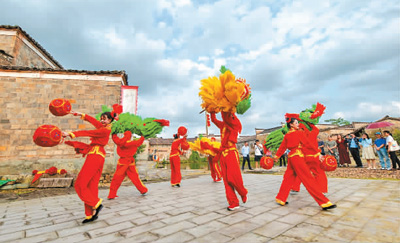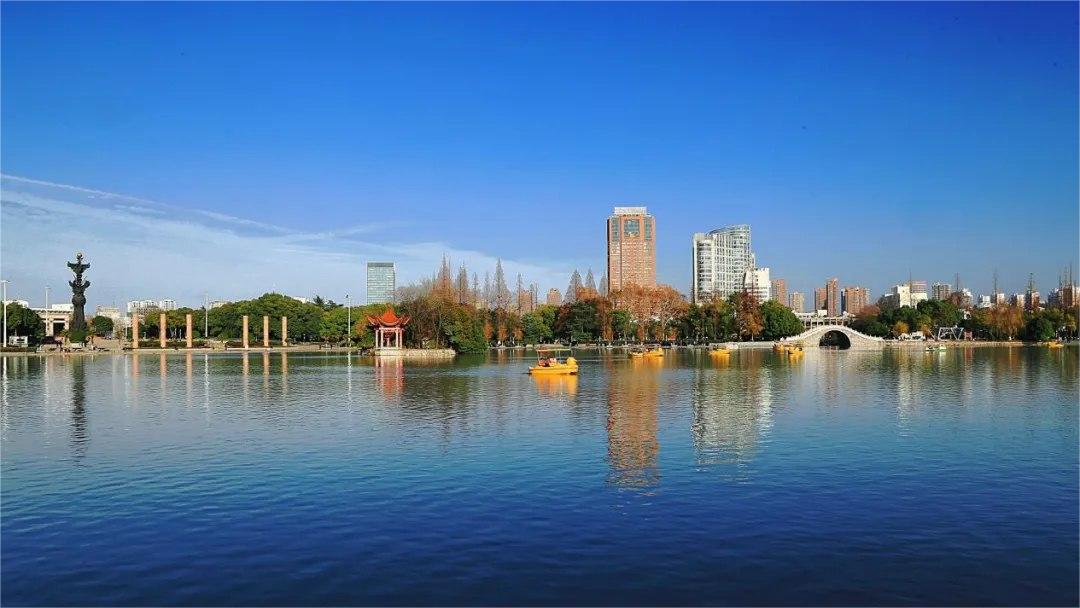Rural China's ancient architectural treasures attract tourists

Tourists ride bamboo rafts at Chengkan ancient village in Huizhou district, Huangshan city, east China’s Anhui Province. (Photo/Fan Chengzhu)
Residential courtyards, agricultural landscapes, defensive fortifications, temples... China’s vast countryside is dotted with a rich variety of ancient architectural treasures that document historical changes and carry cultural heritage, making them an essential part of the rural landscape.
To enrich the supply of quality cultural and tourism products during the summer vacation, the Ministry of Culture and Tourism (MCT) recently selected and launched 82 national rural tourism routes, guiding visitors to explore ancient buildings, visit historical sites, trace their roots, and appreciate the culture. The MCT has promoted these rural tourism routes through various channels, including social media campaigns and partnerships with online travel agencies.
Li’erkou village in Tianzhen county, Datong city, north China’s Shanxi Province, is a historic village that gained fame due to its well-preserved section of the Great Wall.

Tourists visit Juxi village, an ancient village that is home to over 10 well-preserved ancient courtyards and more than 200 ancient dwellings, in Panfeng township, Pan'an county, Jinhua city, east China’s Zhejiang Province. (Photo/Chen Yueming)
The Li’erkou section of the Great Wall, named after the village, is an earth-packed wall, considered one of the best-preserved, most spectacular, and most valuable sections of earthen Great Wall in Shanxi Province.
Tianzhen county, building off the cultural significance of the Li’erkou Great Wall, established a Great Wall scenic area covering seven square kilometers. It has become an important component of the Great Wall national cultural park, integrating elements of the Great Wall with the culture of the ancient village.
Li’erkou has welcomed new opportunities for tourism development. Villagers planted apricot and plum trees, opened bed-and-breakfasts and restaurants, and provided opportunities for tourists to experience local customs. Li’erkou has become a calling card of tourism for the county, receiving approximately 200,000 visitors annually, allowing villagers to make a living through tourism.
The village of Cuandixia in Zhaitang town, Mentougou district, Beijing, has a history of over 500 years. Its ancient military and commercial roads and traditional residential architecture vividly display the cultural charm of the ancient villages in western Beijing. In 2003, it was recognized as one of the first Chinese historical and cultural villages. Visiting the ancient residences in Cuandixia is a popular activity for tourists visiting the outskirts of Beijing. Currently, there are over 70 sets of Qing Dynasty (1644-1911) residences, showcasing the architectural styles of both northern and southern China.
In addition to viewing ancient architecture, visitors can also stay in the ancient buildings. The village encourages locals to open guesthouses, restaurants, and creative shops in their own courtyards. Moreover, during holidays or leisure times, the village hosts activities like folk music singing and storytelling, enriching the cultural experiences of tourists.

People perform during a performance themed on an intangible cultural heritage in Zhuqiao village, Jinxi county, Fuzhou city, east China’s Jiangxi Province. (Photo/Deng Xingdong)
Xinguang village in Pujiang county, Jinhua city, east China’s Zhejiang Province, is a traditional ancient village with a history spanning over 300 years with a large number of well-preserved ancient buildings.
Ten years ago, Xinguang village was relatively unknown, even being considered a “hollow village”. In 2015, Chen Qingsong, founder of the Pujiang Young Entrepreneur Alliance, came to Xinguang village, recruiting over 20 other young entrepreneurs to lease a dozen ancient buildings, transforming them into creative studios that showcase intangible cultural heritage skills and various artistic products. The village soon became famous, attracting visitors to experience the new charm of the ancient village.
Similarly, Xixinan village in Huizhou district, Huangshan city, east China’s Anhui Province, has renewed its charm through creativity. With a history of over 1,200 years, it has over 100 Ming and Qing dynasty buildings and cultural relics. In recent years, the village has revitalized its ancient residences, developing a Huizhou-style cultural and tourism industry. Some ancient buildings, restored according to the principle of “repairing the old as old”, have been transformed into guesthouses, bars, cafes, and creative bases, becoming popular destinations for enjoying life in an ancient village.
Today, experiencing excellent traditional Chinese culture is increasingly becoming a significant goal for many travelers. As important cultural carriers, ancient buildings are being included on more and more travelers’ itineraries.
Photos
Related Stories
- China continues to see rising number of foreign visitors thanks to favorable policies
- China reports 129.9-percent growth of foreign visitors in first seven months
- Chinese vice premier urges efforts to advance rural revitalization
- China targets scalping of scenic spot tickets
- China’s expanding visa-free ‘circle of friends’ draws more global travelers
Copyright © 2024 People's Daily Online. All Rights Reserved.









